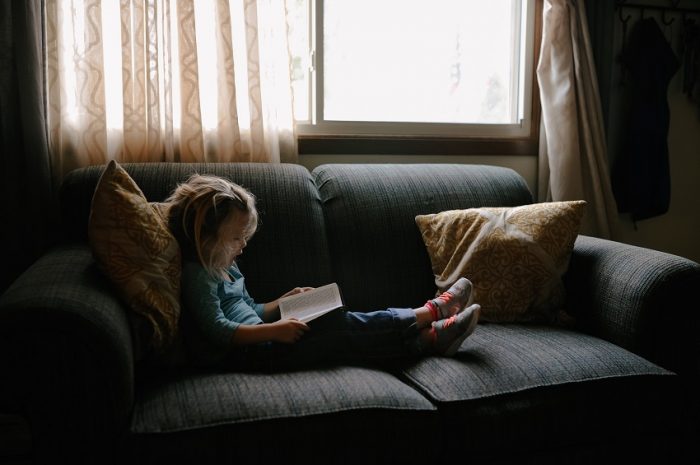What do children want?
The same thing that you and I want –– to be loved, respected and cared for. Except, unlike adults, children rely on other people to get their needs met.
Babies enter into this world with 100 billion brain cells. That’s roughly as many cells as there are stars in the Milky Way, which is two times the amount of the average adult. Our early childhood environment is largely responsible for how these neurons become wired together. It is during this time that most synapses, connections in a child’s world, become made and usually set for life (although, we have the ability to change these set patterns). In fact, 90% of all neural connections are made within the first six years of life.
Psychologists who have studied children’s growth from birth to young adulthood maintain that growth can be divided into various and distinct developmental periods. These periods can be referred to as sensitive periods in one’s life. The most important developmental stage is known to be from birth to age six. It is here that the foundation of one’s manifest spirit begins to take place and the intelligence for life becomes formed.
Maria Montessori was a European early childhood educator in the 1900’s who was far ahead of her time. She intensely studied early childhood development and came to the conclusion that the mind of the early child until age six is absorbent. From birth to age three a child’s mind is completely absorbent. At age three the rational mind begins to develop. Absorption still continues to take place until age six, when the rational mind begins to take over. What this means is that children between the ages of birth to six are constantly taking in new information. Since their rational mind hasn’t been fully developed yet, they have no filters or discernment for what they are taking in. Therefore, they take in everything.
They are literally like living a sponge, sucking up all that life brings its way. Not all of the information we take in stays with us forever. Cells we no longer use, we lose. This is a process called synaptic pruning. I tend to think of it like digging a groove for water to flow. The deeper, the more dug the groove, the more water is going to flow in that particular direction. Our brains are much like that. The more reinforced connections become established in children’s brains, the more synapses they will have to match that made connection.
As parents, care takers, educators, aunts, uncles, grandparents and friends we want to support our young children in establishing the best possible healthy brain connections. Right? Then do yourself and your children this one favor. Stop putting your children in time-out (at least before the age of six, although I don’t agree with it ever).
As an early childhood educator, a nanny, an aunt and a baby-on-the-street lover, I’ve seen a lot of scary stuff go down in terms of disciplining children. One common tactic widely used amongst caretakers is what’s known as “time-out”. You’ve all seen it, or you’ve done it. You know, your child starts acting in a way in which you deem to be inappropriate; you then instruct your child to go be alone by themselves for a certain amount of allotted time in either, a corner, a specially marked time-out chair, their bedroom, your bedroom or just some isolated part of the house. This is one of the most emotionally damaging things we could do to our children. Before the age of six, the part of the brain which is responsible for logic and reason, the neocortex, has not become fully developed. Around age three we can see examples of children starting to exercise reason. That’s right, just starting to. Therefore, their brains are still very much in the absorbent stage.
What this means in terms of putting children in time-out is that children before the age of six will not understand why they are in time-out. Quite literally, their brains aren’t able to make that logical connection for them.
For example, let’s say a five year old hits his little sister. A parent’s automatic response may be to immediately put that child in time-out. The child is not physically able to make the connection inside of himself between hitting his sister and now being in time-out. Maybe the child just had a lot of excess energy and had no other resource available to him to release it, so he hit his sister.
Since the logical connection of why he is in time-out isn’t able to be made, other absorptions, or impressions become formed in the brain in lieu of something rational. These absorptions usually manifest in children thinking they are bad or not good enough and can stick with children throughout their lives.
Surely, if you were told to go stand in a corner and be all alone from everyone, a part of you would think you were bad or not good enough too, even as an adult, with our rational mind in full function! If neural pathways are created through repetition of connections, what type of synapse do you think would be set up through the constant use of time-out?
We want to bring our children close to us and cloak them in love, not send them off in time-out. Ironically, the closer emotionally our children are to us in early childhood, the more emotionally independent they will be later in life.
If a child elicits a behavior that is undesirable to you as a parent or caretaker I would urge you to be the one to take the time-out. Often it is the parents that get anxious and frustrated and need a break, not the child. The next time your child “acts up,” ask yourself, what need of my child’s isn’t being met right now?
An acted out undesirable behavior from a child only means that there is a need that’s not being met. You can start simply by applying Maslow’s hierarchy of needs –– is the child hungry, cold, hot or tired? Does the child need extra gentleness, sensitivity or light touch? Does the child need an avenue to express energy by means of physical activity? Keep going down the list until you are able to uncover the hidden need.
Above all, remember this –– next time you want to put your child in time-out, stop. Put yourself in time-out. From there, figure out what your child’s deeper need is and give it with love and kindness.












Read 18 comments and reply